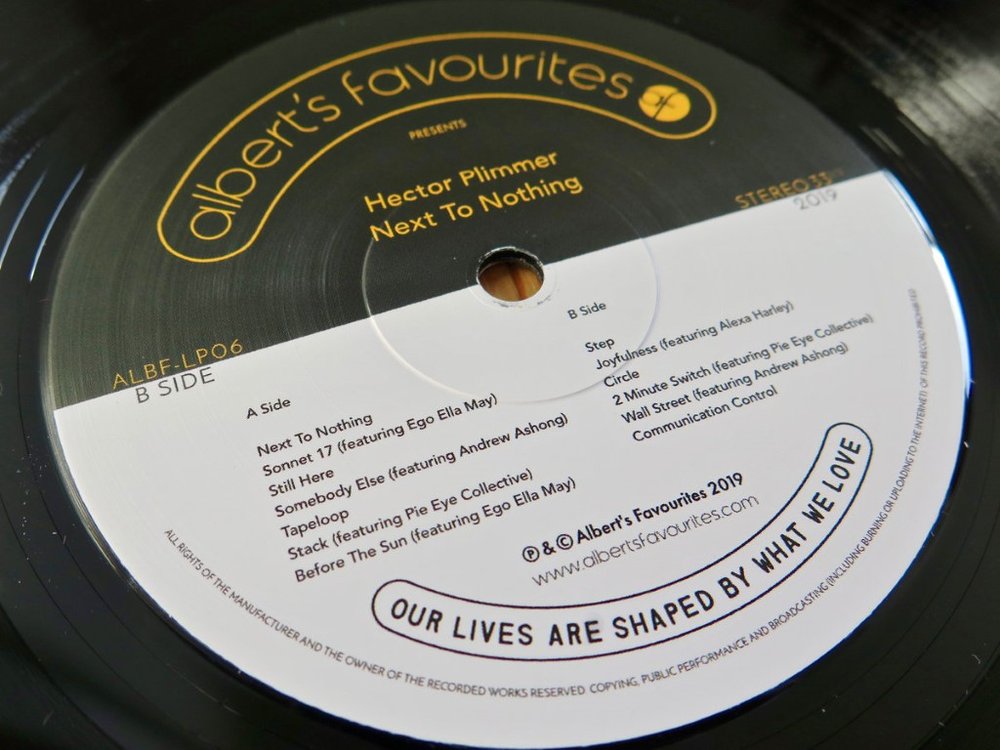Next to Nothing

GMD: Your music and graphic design dovetailed so sweetly for your Major Project on GMD where you brought together drawing/illustration through the moonscape scores which you then invited other electronic musicians to interpret. I remember you asking, super politely, whether your burgeoning music production and song writing could be a thing on the course. I couldn’t believe you had to ask, but once you had, it was clear where you were heading once you’d graduated.
HP: Yes! In fact both Major Projects AND my dissertation were focused around sound & music. Throughout college and university I’d been working on my own music and putting on parties, parallel to studying graphic design, so when I finally found a project that even faintly mentioned music I jumped at the opportunity.
During my time at LCC I realised I wasn’t necessarily going to be the crisp, clean cut designer a lot of my peers were. I just knew that I loved researching ideas and getting stuck in with the making side of things. I remember a bunch of occasions that I’d tell you or another tutor my ideas and I’d get the “Hector’s not following the brief again” look… I’m still quite surprised I managed to get away with it! I think once I found out you were a music nerd too I knew you had my back to some extent. It also helped that my dissertation tutor was obsessed with Dr. Who, as part of my essay was about Delia Derbyshire and The Radiophonic Workshop.
GMD: For current students (and future students for that matter), how important is it to allow yourself to bring in your own interests and creative ambitions that might fall outside of typical ways of working?
HP: I think it’s a no-brainer really! Actually I think if you’re involved enough it’s almost impossible for your various creative interests not to inspire and inform each other. It’s what sets one person apart from another.
GMD: With your second album Next to Nothing (which sounds wonderfully life affirming by the way, which is lovely given everything from Brexit to growing fears for the environment and so on), you’ve once again designed the artwork. How important does image making and graphic design remain to your creative process, when I now see you (as presumably does everyone from your collaborators to your fans!) as a musician and producer.
HP: It’s incredibly important for me to keep up my design practice. For a start, all music needs a visual element to accompany it.
The artwork of a release could be the deciding factor when it comes to whether someone picks up the record in a shop or listens to it online. I also take a lot of pleasure in designing my radio show flyer every month, sometimes continuing along a certain design theme for months on end and seeing how many different ways I can push it.
I feel incredibly lucky to have two outlets for creativity. If I’m going through a creative block in my music, I’ll stop working on it for a while and focus on design, and vice versa. Also financially I don’t think I could’ve got to where I am at the moment without one or the other. Music can often feel like doing a lot of work for little or no financial gain and working freelance as a graphic designer has often helped keep me afloat. I’m still trying to figure out the balance!
GMD: As I think you’re aware, I place a great deal of importance on location in terms of its importance in creativity. How important or impactful was LCC’s place within the Elephant & Castle when you were studying, exploring and evolving creatively?
HP: Elephant & Castle is unlike anywhere else in London. Whilst I was at LCC it was on the cusp of regeneration. A lot of it felt like it was trapped in time – the tunnels with the dodgy murals, the shopping centre and bowling alley with sticky carpets, the huge, empty Heygate Estate that was open to wander around.
A big part of what I loved about the course was how much we were encouraged to explore the area and learn about it. I think it kind of unlocked a window into Elephant & Castle that only we could see, whilst most people thought it was an eyesore, or just a pair of massive roundabouts to get from A to B.
Who knows what it’s going to look like in years to come, hopefully some of it’s character will shine through the masses of glass fronted buildings going up.
GMD: Final question – any advice to GMD students with more than a passing interest in new music?
HP: Share your discoveries with your friends. Try to listen outside of your comfort zone.
Listen to my radio show!. https://www.nts.live/shows/is-this-thing-on
Hector Plimmer and Ben Hayes’ Purcell Sessions at the Southbank, exploring Artificial Intelligence and Machine Learning, take place in the first week of February, culminating in a live performance in the Purcell Room on Saturday 8 February. https://www.southbankcentre.co.uk/blog/ben-hayes-and-hector-plimmer-making-music-artificial-intelligence
Hector’s debut album Sunshine, is also still available through Albert’s Favourites. http://albertsfavourites.com/shop/
Previous blog post: https://gmdlcc.co.uk/2017/05/03/alumnus-musical-debut/

